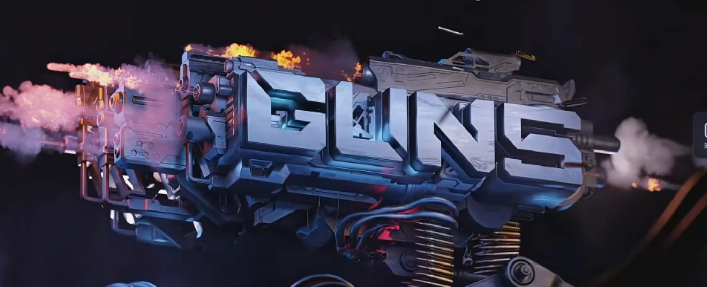
Stunning C4D Portfolio: Cinematic Video Production
https://coloso.global/zh-TW/products/3dartist-yukyungrae-us
01. 簡介
關於講師
關於課程
什麼是作品集和演示捲軸?
作品集(演示卷)建構的要點和技巧
About the instructor
About the class
What is a portfolio & demo reel?
Important points and skills in portfolio(demo reel) building
02. 示範卷製作工作流程及流程
演示卷工作流程(附演示卷)
演示卷安排
使用純參考進行構思(免費軟體)
文字、收集mood board圖像、編寫故事板
收集相關圖像參考以匹配影像
Demo reel workflow (with demo reel)
Demo reel scheduling
Ideating using pure reference(free program)
Text, collecting mood board images, writing storyboards
Collect relevant image references to match the video
03.佈局
三分法
突顯主題
對稱
前景、中景、背景
真實規模
The rule of thirds
Highlighting the subject matter
Symmetry
Foreground, middleground, background
Real scale
04. 辛烷材料
關於可有效利用 PBR 紋理的 Octane 通用材質的說明
關於複合材料和混合材料的說明
Quixel Megascan 和 Bridge 的利用
Explanation about the Octane Universal Material which enables the efficient use of PBR texture
Explanation about the Composite Material and Mix Material
Utilization of Quixel Megascan and Bridge
05. 辛烷值分散
幫助您理解辛烷值散射的基本解釋
辛烷分散的利用
Octane Scatter 實踐中使用的幾個技巧
Basic explanation to help you understand Octane Scatter
Utilization of Octane Scatter
Several TIPs on Octane Scatter used in practice
06.練習#1:辛烷值分散
如何使用 Octane Scatter 創建廣闊的森林
山脈排列以強調遠近法
Basic explanation to help you understand Octane Scatter
Utilization of Octane Scatter
Several TIPs on Octane Scatter used in practice
07.練習#1:霧合成
After Effects霧源合成可實現豐富的製作
使用傳輸通道建立樹葉的顏色
After Effects Fog source compositing for rich production
Using Transmission Pass to create the color of leaves
08.練習#2:框架構成與螢幕方向
真實比例的重要性以及如何配置相對尺寸的框架
使用景深來表達深度感
使用圖像來表達背景
After Effects Fog source compositing for rich production
Using Transmission Pass to create the color of leaves
09.練習#2:頂點圖
使用頂點圖定位樹木
區分前景、中景和背景以獲得深度感
Locating the trees by using the Vertex Map
Distinguishing foreground, middleground, and background for the sense of depth
10.練習#2:紋理
使用污垢節點對建築物進行自然紋理處理
Natural texturing on buildings using the Dirt Node
11.練習#2:Z 深度
使用 Z 深度通道進行霧合成以增強場景的深度感
Fog compositioning using the Z-depth pass for sense of depth in the scene
12.練習#3:使用克隆器
幫助您理解 Cloner 的基本解釋
使用克隆機製作較深的通道
Basic explanation to help you understand Cloner
Making a deep passageway using a Cloner
13.練習#3:照明
使用互補色對比照明
Lighting using complementary color contrast
14.練習#3:後校正
後修圖技法可增加螢幕的深度和豐富度
Post-correction techniques that add depth and richness to the screen
15.練習#4:紋理和照明
使用污垢節點進行膠囊紋理
將照明等級與暗光分開
Capsule texturing using Dirt Node
Divide lighting levels from dark lighting
16.練習#4:後校正
燈光合成呈現立體感
Lighting compositing to bring out the three-dimensionality
17.練習#5:佈局
了解影像的消失點
使用 Cloner 的高效技巧
相機、物體放置、深度距離設定
Understanding the vanishing point of the video
Efficient tips using Cloner
Camera, object placement, distance setting for depth
18.練習#5:Alpha 紋理
透過燈光區分對象
使用 alpha 紋理的玻璃污垢紋理
Distinguish between objects with lighting
Glass dirt texturing using alpha texture
19.練習#5:閃爍表達
強調After Effects中的光暈
Emphasizing the glow in After Effects
20.練習#6:版面設定與安排
對稱排列
反白關鍵對象的佈局設置
Symmetry Arrangement
Layout setting to highlight key objects
21.練習#6:資產安排
如何使用Topowire插件
如何製作電線
How to use Topowire Plug-in
How to make a wire
22.練習#6:照明
細緻的高調和低調的燈光表達
如何在C4D中創造射線效果
Lighting expression with detailed high key and low key
How to create Ray effect in C4D
23.練習#6:光線效果
射線效果合成
透過高調和低調設定增加螢幕密度
使用灰塵源增加螢幕的豐富度
Ray effect compositing
Increasing the density of the screen with high key and low key settings
Increasing the richness of the screen with Dust source
24.練習#7:利用焦點
透過分割畫面營造空間感
如何利用焦點賦予深度
使用克隆機製作載流電線。
Creating a sense of space through split screen
How to use focus to give depth
Using Cloners to make current-carrying wires.
25.練習#8:真實掃描紋理
人體建模付費網站簡介
對下載的建模檔案自訂提示
使用 C4D 雕刻工具進行簡單的臉部修改
Introduction to paid sites for human modeling
Customizing tips on the downloaded modeling file
Simple face modification using C4D Sculpt Tool
26.練習#8:SSS 節點
了解 SSS 節點
逼真的皮膚紋理
Understanding SSS Node
Realistic skin texturing
27.練習#8: After Effects後期校正 – 皮膚合成
皮膚紋理所需的通道合成
使用After Effects插件進行自然皮膚合成
Pass compositing required for skin texture
Natural skin compositing using After Effects plug-in
28.練習#9:Alpha 紋理
使用 Alpha 紋理監控螢幕紋理
將After Effects建立的動畫匯入到 C4D
Monitor screen texturing using Alpha Texture
Importing the animation created in After Effects to C4D
29.練習#10:相機動畫
如何創建自然的相機抖動
使用相機景深的戲劇性場景構圖
How to create a natural camera shake
Dramatic scene composition using camera Depth of Field
30.練習#10:輕量傳遞
使用燈光通道,在After Effects中應用燈光動畫
使用物件層通道
Using the Light pass, applying light animation in After Effects
Utilizing the object layer pass
31.練習#11:理解姿勢
姿勢簡介
使用 Posemorph 使用簡單的臉部動畫
Introduction to Posemorph
Utilizing simple facial animation using the Posemorph
32.練習#11:利用 Posemorph
使用 Posemorph 的睜眼動畫
Opening eyes animation using the Posemorph
33. 成品
渲染
如何在After Effects中組織序列
如何透過組合各個場景來創造成品
Rendering
How to organize the sequences in After Effects
How to create a finished product by combining each scene
最后更新时间 7 月 by admin









没有字幕阿
后面公开